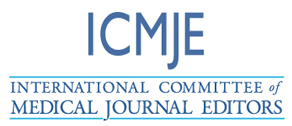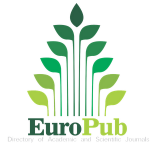Effect of Robusta Coffee (Coffea Canephora) on the Degree of Acidity (pH) of Saliva
DOI:
https://doi.org/10.55677/IJCSMR/V3I5-02/2023Keywords:
Salivary pH, Saliva, Robusta CoffeeAbstract
Background: saliva is a complex fluid produced by the salivary glands and plays an important role in maintaining oral health. Saliva consists of 98% - 99% water, about 2% is composed of organic & inorganic components, electrolytes, and various enzymes. Robusta coffee (Coffea canephora) has the main content of caffeine, carbohydrates, protein and free amino acids, and chlorogenic acid. The content in the coffee can cause changes in the level of saliva acidity (pH). Purpose: to better understand the effects of robusta coffee (Coffea canephora) against level of saliva acidity (pH).
Method: based on the exclusion and inclusion criteria, a total of fifteen (15) journals were analyzed from the Google Scholar, Science Direct, PubMed’s and NCBI. The journals that analyzed are regarding an article that discusses the effect of coffee on salivary pH.
Conclusion: this review reveals that robusta coffee (Coffea canephora) causes a decrease in the acidity (pH) of saliva. This happens due to the higher the concentration of the coffee, the pH of the coffee becomes more acidic, but there are several studies reports that low concentrations of robusta coffee (Coffea canephora) do not cause a decrease in salivary pH.
References
Tarigan S. Differences in Gargling Cow's Milk and Pure Soy Milk on the Decrease in Salivary pH in Students of 2018 Faculty of Dentistry, Prima Indonesia University. Mutiara Journal of Public Health. 2019; 4(1): 33–9.
Purnawati LK, Pertiwi FR, Anggaraeni PI. Effects of Consumption of Carbonated Drinks and Citrus Flavored Drinks on Salivary pH in PSPDG Students, Faculty of Medicine, Udayana University. Bali Dental Journal. 2018; 2(1): 37–43.
Nadia FH, Ismail A. Effect of 10 Gram Cheddar Cheese Consumption on Salivary pH - A Study of Dentistry Students of Sultan Agung Islamic University Semarang. OdontoDental Jurnal. 2014; l(1): 34-38.
Baliga S, Muglikar S, Kale R. Salivary pH: A Diagnostic Biomarker. Journal of Indian Society of Periodontology. 2013; 17(4): 461–5.
Fiyaz M, Ramesh A, Ramalingam K, Thomas B, Shetty S, Prakash P. Association of Salivary Calcium, Phosphate, pH and Flow Rate on Oral Health: A study on 90 subjects. Journal of Indian Society of Periodontology. 2013; 17(4): 454–60.
Nugroho C. The Effect of Consuming Pineapple Fruit on Salivary pH in Santriwati aged 12-16 years at Perguruan Sukahideng Islamic Boarding School, Tasikmalaya Regency. Journal ARSA. 2016; 11(1): 10–15.
Widia R, Kasuma N. Comparison of Salivary pH Before and After Consuming A Solution of Sugar and Palm Sugar In Dentistry Faculty’s Student Of Andalas University. Andalas Dental Journal. 2016; 4(2): 141–150.
Saloko S, Sulastri Y, Murad, Rinjani MA. The Effects of Temperature and Roasting Time on the Quality of Ground Robusta Coffee (Coffea rabusta) using Gene Café roaster. AIP Conference Proceedings. 2019; 2199(1): 1–14.
Widodo WE, Atmaji G, Yohanes H. Performance of Fluidization Type Coffee Roaster and Roasted Coffee Quality Test. Journal of Agricultural Technology. 2015; 16(2): 117–26.
Artho LN, Wuisan J, Najoan JA. Effects of Robusta Coffee Powder (Coffea canephora) on Incisional Wound Healing in Rabbits (Oryctolagus cuniculus). e-Biomedical Jounal. 2015; 3(3): 743–8.
Andriany P, Hakim R, Mahlianur. Effect of Ulee Kareng Coffee Consumption (Arabica) on Salivary pH in Young Adults. Dentika Dent Journal. 2012; 17(2): 150–2.
Paroza Z, Deynilisa S. Perbandingan Mengonsumsi Kopi Arabika dan Kopi Robusta terhadap pH Saliva. Jurnal Kesehatan Gigi dan Mulut. 2021;3(1):35–8.
Soraya C, Sunnati, Munawar S. Effect of Robusta Coffee and Arabica Coffee on Salivary pH Changes (In Vitro). Cakradonya Dental Journal. 2013; 5(1): 475–54
Masoumi S, Setoudehmaram S, Golkari A, Tavana Z. Comparison of pH and Flow Rate of Saliva After Using Black Tea, Green Tea and Coffee in Periodontal Patients and Normal Group. Journal of Dental School Shahid Beheshti University of Medical Science. 2016; 34(4): 235–43.
Batubara NA. Effects of lemon juice (Citrus limon) on flow rate, salivary pH value and colony count of Staphylococcus aureus (in vivo) [Thesis]. Medan: University of North Sumatra. 2017;19–20.
Qalbi MZ, Irrahmah M, Asterina A. Differences in Salivary Acidity Degree (pH) Between Smokers and Non-Smokers in PGRI 1 Padang High School Students. Andalas Health Journal. 2018; 7(3): 358.
Oktafriana S, Almujadi T. Overview of Salivary Acidity Degree (pH) and Number of Caries in Students in Intimung Dormitory, North Kalimantan. Journal Oral Heal Care. 2014; 5(1): 1–8.
Zulfikri, Putra F. Differences in Salivary pH Before and After Gargling with Rosella Flower Decoction in Bukittinggi Dental Nursing Department Students. Ensiklopedia of Jurnal. 2019; 1(4): 116–21.
Maheswari R. Inhibition of Robusta Coffee Bean Extract (Coffea canephora) on the Growth of Plaque Bacteria. Research Report Universitas Airlangga. 2015; 16–20.
Lubis MRF, Lindawati Y. Effects of Robusta Coffee Bean Extract (Coffeacanephora) on Salivary pH and Growth of Staphylococcus aureus Bacteria (ATCC® 29213tm) (In Vitro). PANNMED Scientific Journal. 2019; 12(3): 309–12.
Imran H. Effect of Coffee Consumption on Salivary pH Decrease in Adults. Journal of Health Research Suara Forikes.2016; 7(3): 161–5.
Sa’diah K, Maulidahayati. Effect of Coffee Consumption (Coffea sp) on pH, Flow Rate and Salivary Viscostas in Coffee Holics. Jurnal B-Dent. 2018; 5(1): 72–82.
Downloads
Published
How to Cite
Issue
Section
License
Copyright (c) 2023 International Journal of Clinical Science and Medical Research

This work is licensed under a Creative Commons Attribution 4.0 International License.











